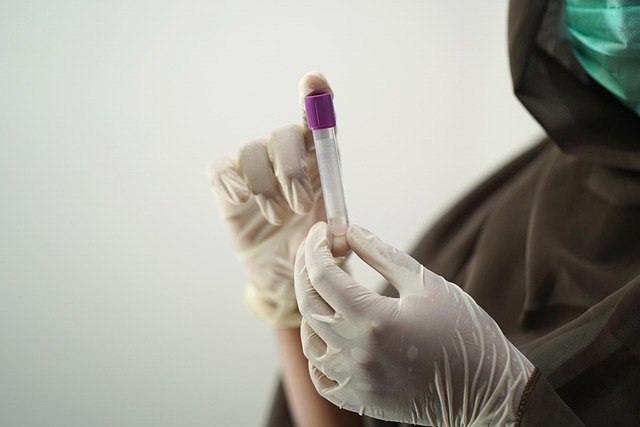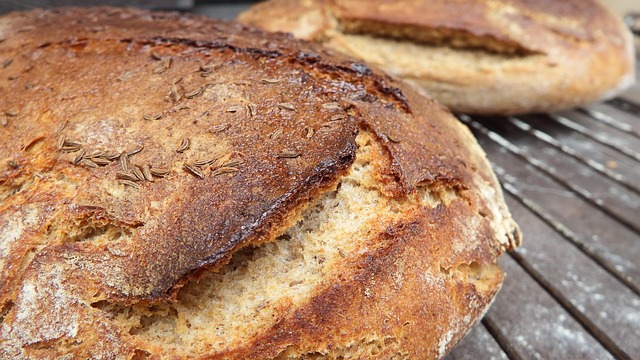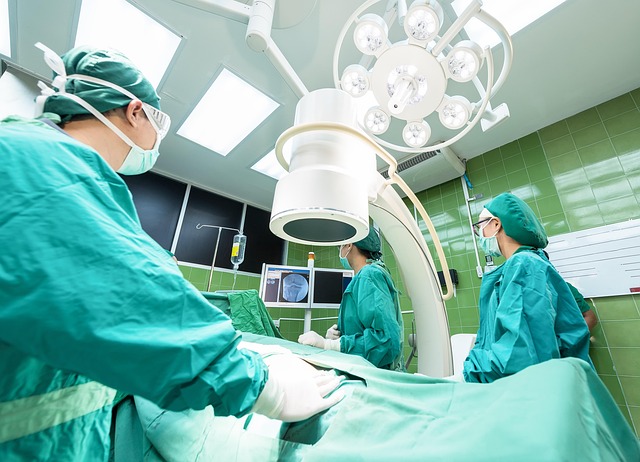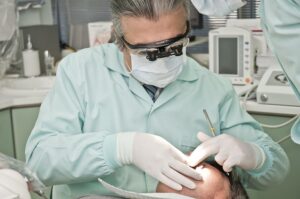The CoolSculpting Procedure is a non-invasive body contouring treatment for reducing fat on the thighs, utilizing controlled cooling technology (cryolipolysis) to freeze and destroy fat cells without damaging surrounding tissue. Safe, effective, and FDA-cleared, it offers immediate post-procedure activity with temporary mild side effects like redness or swelling. Results become visible as early as a few weeks, with up to a 20% decrease in fat thickness observed over several months. For optimal results, adopting a balanced diet, regular exercise, adequate hydration, and quality sleep alongside the procedure is recommended.
“Discover the transformative power of CoolSculpting for thighs—a non-invasive fat reduction treatment revolutionizing body contouring. This comprehensive guide explores the science behind its effectiveness, who is a good candidate, and what to expect during and after the procedure.
From understanding the safety and potential side effects to combining it with lifestyle changes for optimal results, this article covers all you need to know about the CoolSculpting procedure for achieving a slimmer, more confident you.”
Understanding CoolSculpting: A Non-Invasive Fat Reduction Treatment

CoolSculpting is a non-invasive fat reduction treatment that uses controlled cooling to eliminate stubborn fat cells. The procedure involves applying a gel pad to the targeted area, such as thighs, and using a cooling mechanism to lower the temperature of the skin and underlying fat. This process prompts the fat cells to crystallize and break down, with the body naturally eliminating them over time. Unlike surgical options, CoolSculpting is painless and does not require any recovery period.
The procedure is designed to target specific areas where conventional diet and exercise may not yield significant results. It’s an excellent choice for individuals looking for a non-surgical approach to contour their bodies. During the treatment, patients can relax as the device emits a controlled amount of cold, ensuring comfort throughout the process. This technology has been extensively tested and is cleared by the FDA for safety and efficacy.
The Science Behind CoolSculpting for Thighs

CoolSculpting for thighs involves a non-invasive body contouring procedure that utilizes cryolipolysis to break down and eliminate fat cells in targeted areas. The science behind it is quite fascinating; by applying controlled cooling, the CoolSculpting device damages the fat cells while leaving the surrounding skin, nerves, and other tissues unharmed. This process prompts the body’s natural response to eliminate these damaged fat cells, leading to a reduction in fat thickness over time.
The CoolSculpting procedure is designed to be comfortable for patients. During the treatment, a gel pad is placed on the thigh area, which is then cooled to precise temperatures using the device’s applicators. As the fat cells freeze and crystallize, they are slowly destroyed, triggering the body’s metabolic process to eliminate them. This non-surgical approach offers a safer, more effective alternative to traditional liposuction for those seeking to sculpt their thighs without incisions or lengthy recovery periods.
Eligibility and Candidate Selection for CoolSculpting Procedures

The eligibility for CoolSculpting procedures largely depends on an individual’s overall health and their desire for fat reduction in specific areas, particularly the thighs. Candidates should be at or near their ideal body weight, as CoolSculpting is most effective for those with manageable amounts of subcutaneous fat. It’s important to note that this non-invasive procedure isn’t recommended for extreme weight loss or for people with certain medical conditions such as bleeding disorders, severe allergies, or pregnant/breastfeeding women.
During the candidate selection process, qualified healthcare providers will consider a patient’s medical history, current health status, and realistic expectations. They’ll assess the thickness of the fat layer in the target areas to ensure the CoolSculpting Procedure can be performed effectively. Additionally, patients should disclose any medications or supplements they’re taking, as certain substances may affect treatment outcomes.
What to Expect During a CoolSculpting Session

During a CoolSculpting session for thighs, you can expect a non-invasive procedure designed to reduce fat cells in targeted areas. The treatment involves the use of cryolipolysis, where cold temperatures are applied to the skin to freeze and destroy fat cells. No anaesthesia is required, making it a comfortable experience. A specialist will apply a gel pad to your thighs, after which a cooling device is placed on top. You may feel some pulling or pinching as the device works to freeze the fat cells. The procedure typically lasts around 35-60 minutes per area treated, and you can even stay active immediately afterwards, though it’s recommended to avoid strenuous activity for a few days.
After the session, you might notice some discomfort or numbness in the treated areas, but these side effects are usually temporary. Over the following weeks, your body will naturally process and eliminate the destroyed fat cells, leading to visible results as excess fat is reduced. It’s important to remember that CoolSculpting is not a weight-loss solution but rather a tool for contouring and toning specific problem areas, like the thighs.
Potential Benefits and Results of Cooling Your Thighs

The CoolSculpting procedure offers a non-invasive way to reduce stubborn fat on the thighs, providing several potential benefits. By using controlled cooling technology, this treatment safely and effectively targets fat cells while leaving surrounding tissue unharmed. This means you can say goodbye to unsightly thigh fat without incisions or recovery time.
Results from CoolSculpting can be noticeable as early as a few weeks after the session, with even more significant changes observed over several months. Many patients experience up to a 20% reduction in fat thickness, leading to slimmer and firmer thighs. This procedure is ideal for individuals seeking a body contouring solution without surgery, offering a convenient and effective route to achieving their desired shape.
Safety, Side Effects, and Recovery After CoolSculpting

CoolSculpting for thighs is a non-invasive fat reduction procedure that has gained popularity due to its effectiveness and minimal downtime. Safety is a primary concern for any cosmetic treatment, and CoolSculpting is no exception. The procedure is FDA-cleared, indicating it has undergone rigorous testing for safety and efficacy. During the treatment, a cooling technology targets and freezes specific fat cells in the treated area, leading to their gradual elimination by the body’s natural processes.
As with any medical procedure, there can be side effects associated with CoolSculpting. These are typically mild and transient, including temporary redness, swelling, or numbness at the treatment site. In rare cases, patients may experience discomfort during the cooling process. Recovery is swift; most people can resume their normal activities immediately after the session, though it’s recommended to avoid strenuous exercise for a few days to ensure optimal healing. Proper aftercare, as advised by the healthcare provider, is crucial to maximize results and minimize potential complications.
Combining CoolSculpting with Lifestyle Changes for Long-Lasting Results

For long-lasting results, combining the CoolSculpting procedure with lifestyle changes is key. This innovative non-invasive treatment targets and freezes fat cells in problem areas like the thighs, leading to significant reductions in fat over time. However, maintaining results requires a commitment to healthy habits post-procedure.
Diet plays a crucial role; adopting a balanced diet low in sugar and processed foods helps manage weight and prevents rebound fat gain. Regular exercise, including cardiovascular workouts and strength training, enhances metabolism and ensures sustained results. Staying hydrated and getting enough sleep also contribute to overall body health and fat loss sustainability.
